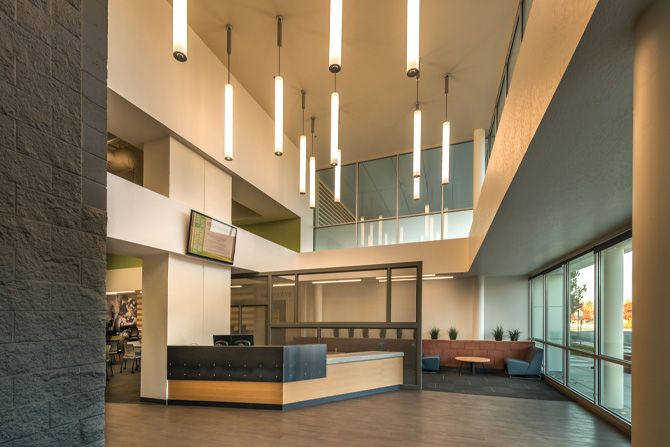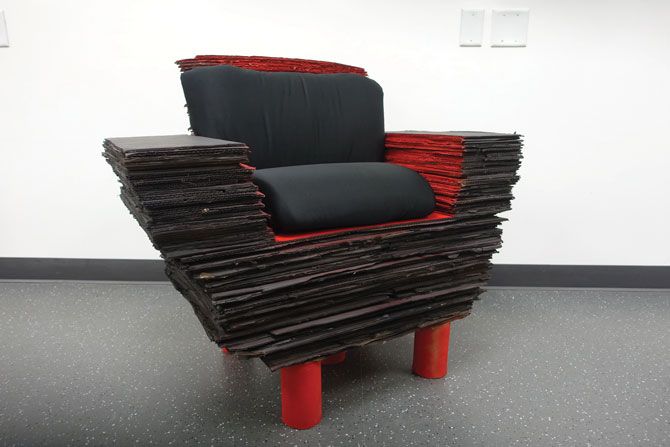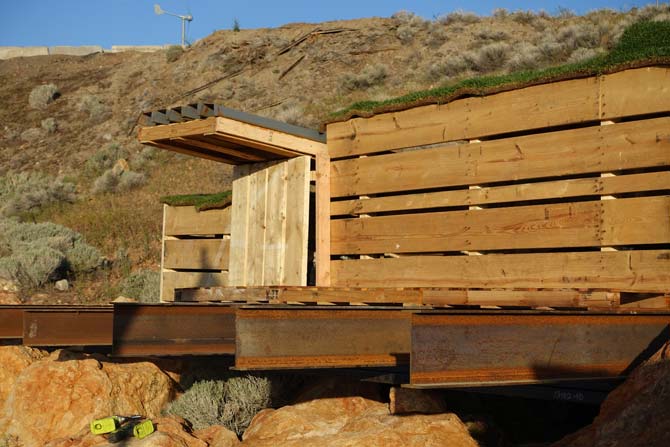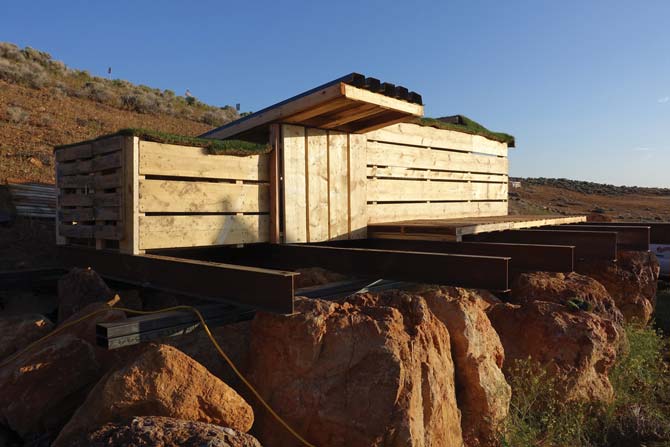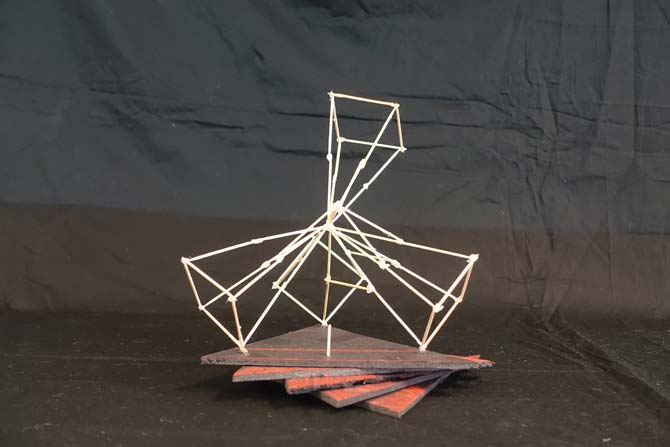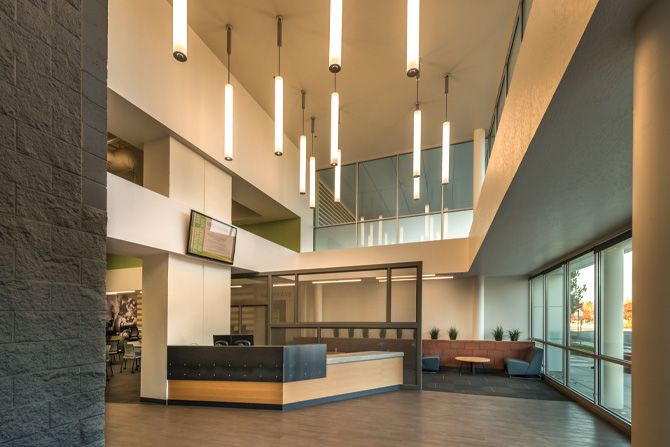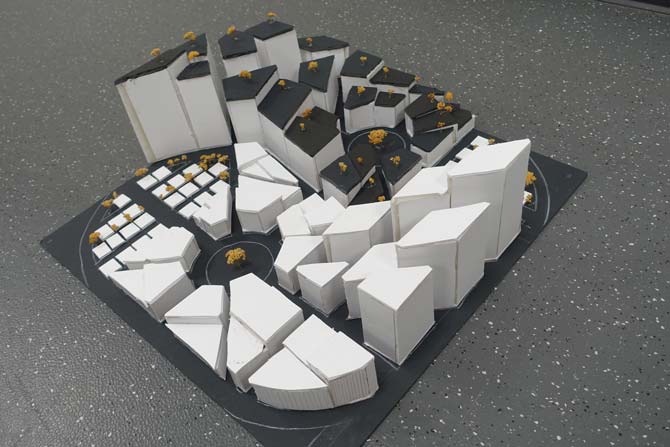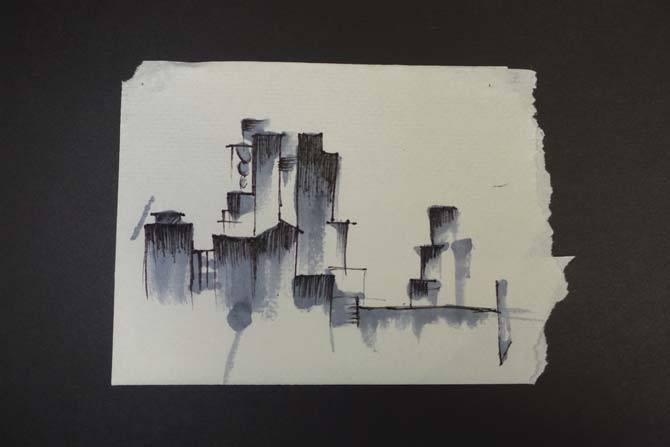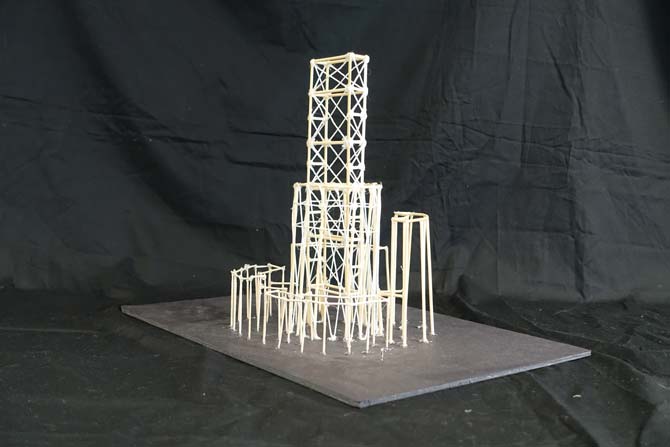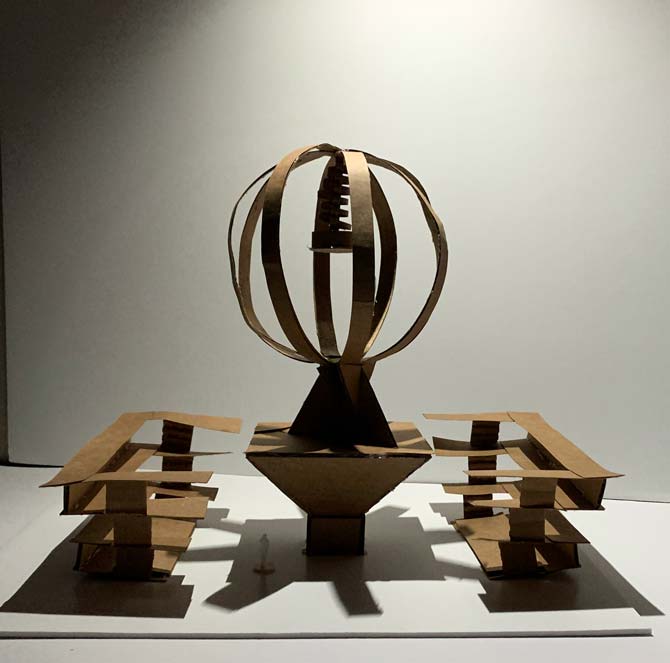Today, per capita, Northern Nevada has an extremely low rate of young qualified architectural design professionals with accredited degrees. Thriving architectural firms are faced with a reduced labor force and therefore have to go out of the area and out of state to hire qualified architects to fill job positions.
Excellence in design has a positive effect on the quality of life of Northern Nevada communities and we are better served by alumni with accredited higher educations to provide that service.
The Truckee Meadows Community College (TMCC) architecture program began in 1984. At that time, the highest conferrable degree, a non-accredited two-year associate’s, was the only model in place for Northern Nevada. However, the program has grown over a period of nearly four decades and has become a respectable program that gives many students and graduates an early foundation for their collegiate careers in architecture. Unfortunately, though, since states across the nation minimally require a professionally accredited degree in order to qualify for the architectural licensing exam, TMCC’s associate degree falls short of serving those who want to complete licensure to practice architecture.
Therefore, TMCC architecture graduates have been forced to conclude their college careers outside the Northern Nevada region. This presents many disadvantages. Anyone interested in an architectural career in Northern Nevada has been faced with either the inconvenience of leaving our community to complete their architectural education, moving into the workforce and capping at a lower-paid position in a firm with no hope of gaining licensure, or abandoning the career entirely.
Essentially, to become an architect, unless students attend UNLV and remain in-state, TMCC’s associate degree leaves architecture students with only the option of going out of state. This increases the cost to unaffordable levels, which encourages most to choose alternate careers. Additionally, for those who leave for out-of-state educations, the statistics are low for alumni returning to northern Nevada.
TMCC’s current aim is to create an accredited Bachelor of Architecture degree.
An Accredited Bachelor of Architecture Program in the Making at TMCC
The accredited Master of Architecture program at UNLV is a six-year degree. There is no accredited Bachelor of Architecture (BArch) program in Nevada and none closer to Reno than a four-hour drive to the Academy of Art University in San Francisco and seven others farther away along the California coastline. To the north, the nearest accredited program is at the University of Oregon. South of Nevada, the nearest accredited Bachelor of Architecture program is at University of Arizona in Tucson.
Faced with these limited options to study architecture in or near northern Nevada, the need to create an accredited BArch at TMCC stemmed from the voices of our students. The idea was presented to TMCC’s architectural advisory board in 2018.
Since then, and after several years of feasibility studies, meetings, and presentations, our community of students, educators and architects have organized a viable curriculum and structure.
During the Fall 2021 academic year, TMCC submitted a proposal for establishing a professionally accredited Bachelor of Architecture (BArch) degree path. This was the first offering in the Nevada System of Higher Education (NSHE), which is
the governing system in our state that oversees the Nevada public system of colleges and universities. On March 3, 2022, under a majority vote rule, 13 Regents who approve policies, budgets and new programs for the entire state voted unanimously in favor of a five-year degree. This degree would extend the existing Associate of Applied Science in Architecture (60 credits) and a stackable Architectural Drafting Skills Certificate (24 credits). The curriculum will build upon and add to the existing framework by adding 90 additional credits for a total of 150 credits. The proposed five-year degree path and its 150 credits will align with the accreditation requirements for the Bachelor of Architecture professional degree defined by the National Architecture Accrediting Board (NAAB).
Beginning in the 2022-2023 academic year, TMCC has put in motion the start of Nevada’s first Bachelor of Architecture program. While currently accepted as eligible for candidacy by the NAAB, once accredited (see projected timeline), it will also be the first of its kind in the United States at a community college level.
Today, many qualified professionals and educators are contributing to the momentum and level of excellence required to make the future TMCC’s Bachelor of Architecture program a resounding success. We invite you to learn more about the program, curriculum, instructors and our next generation of problem solvers.
Curriculum Focus
If we want a nation where leaders and workers can understand the complex challenges of today and tomorrow and meet the demands of the dynamic and evolving workforce, we must recognize that building our people skills, knowledge, and fluency begins in the classroom. TMCC’s College of Applied Sciences is determined to provide the highest teaching and learning environment for those interested in the field of Architecture.
Architecture is about generating solutions for a vast array of issues in the built environment. In order to inspire critical thinking for these future professionals, the foundation of TMCC’s future BArch program emphasizes addressing local and worldwide issues, including but not limited to the national housing crisis, wildfire protection, and sustainability. For instructional projects, TMCC’s staff integrates these topics as objectives with a specific purpose that challenges the students’ thinking and problem-solving. Through a formal presentation process by the students, regular critiques are provided by instructors and successful practitioners.
TMCC’s architectural “Homeless Youth Project” was explored in partnership with the City of Reno and homeless youth service providers. In the Spring of 2018, TMCC students completed an 80-square-foot prototypical transitional “tiny house” for the City of Reno. Passive heating and cooling concepts were integrated throughout. The project entailed research, design, and full-scale built mock-ups.
From the program’s onset in the 80s, TMCC’s early focus on sustainability and alternative energy sources formed a unique foundation for architecture coursework and made TMCC a trusted source for Reno’s community. Increasingly, renewable energy systems are a fundamental element for built environments of the future. The importance of this learning focus is substantiated by statistics such as, carbon dioxide emissions by sector, include 28% buildings and operations, 11% building materials and construction, 32% industry; 23% transportation; and 6% other (Architecture 2030, 2020). TMCC students investigate these issues and examine building systems on for the local region. This approach is consistent with the goals of TMCC and the Nevada System of Higher Education (NSHE) to create an educational system that increases awareness of sustainable issues and to apply creative problem-solving for healthier environments.
Studying In the High Desert
Architecture is always bound to specific site characteristics as a source of creative meaning and environmental influence. TMCC is located within two unique, critical, and underserved regions; the Great Basin and the Northern Sierra Mountain range. TMCC’s BArch program will allow students direct access to this unusual diversity of ecosystems ranging from Alpine Lake Systems to the ecological islands of the Great Basin and the sagebrush steppes of Nevada and Oregon. This kind of ecological rarity is typically unavailable in most architectural programs across the United States. The high desert climate and terrain offers regional and topographical challenges as a basis to instruct for a wide range of conditions. It is a valuable opportunity to immerse students in our unique environment that offers learning within a vast array of circumstances.
The Lake Tahoe watershed is exceptionally fragile and is undergoing significant economic transformation due to climate change and tourism. Similar to our neighboring mountain west states (Montana, Idaho, Wyoming, Colorado, Utah, and New Mexico. Arizona and Nevada) extremes are present such as high wind conditions, heavy snow accumulation, long periods of drought, and dramatic daily and seasonal temperature swings. Architectural solutions must address these issues. Having a real-time relationship to these conditions enables the students to have an immediate understanding of how to create responsibly. With that, TMCC imagines that an architectural graduate would have unique training and design awareness to be proficient in regionally specific sustainable efficiencies, solar design strategies, building electrification, extreme weather effects, drought tolerance, delicate watersheds, urban densification, and wildfire protection.
Creative Problem Solving.
TMCC’s focus on design methodology is targeted toward perpetuating an innovative future. The Bachelor of Architecture program prepares students to design beautiful spaces and buildings, advocate for broader civic discourse, and lead the future of the architecture profession with determination and excellence.
The program will rigorously teach critical thinking that is essential in providing exceptional design to our communities. The teaching staff is dedicated to encouraging individual problem solving as well as collaborative problem solving. Learning will be directed toward research and analysis as a precursor to design. From community planning to individual building and interior architecture, students will be immersed in the discipline of architecture as a wholistic way of thinking. Architects lead clients, engineering consultants, and participate in construction. Therefore, the program will provide students with avenues to leadership on all levels. Effective instruction and feedback is provided by faculty members who are practicing architects. Formal project presentations and reviews of each student’s project include includes outside juror critiques. This strengthens communication skills and validates the pros and cons to architectural solutions.
Students are required to think in 3-dimensions through model-building, perspective drawings, digital technologies and hand sketching. TMCC encourages the exploration of many different techniques of design and professional practice strategies. As the students enter the 4th and 5th years of study, more “high level” professional presentations will be required and TMCC plans to engage the students into more dialogue with local current issues and interaction in the community.
Diversity, Equity, Inclusion and Accessibility (DEIA)
Diversity: TMCC College of Applied Sciences believes that diversity in schools generates equality in communities. TMCC students who may not consider pursuing an architecture degree due to restrictions such as limited funding support or a lack of introduction into the profession by connections, are key issues being addressed to diversify architecture student populations. It is more than financial assistance; mentorship is also imperative. While the number of minority architecture students is increasing, so is the need to diversify faculty.
TMCC’s architecture program continues to demonstrate the ability to recruit and serve ethnically diverse learning communities.
Equity, Inclusion and Accessibility.
Equity and Accessibility: For more students to complete postsecondary education, they must be able to afford it. Affordability is the key to access. Access to the TMCC’s architecture program is achieved by: 1) Increasing student access via TMCC’s Jump Start dual enrollment programs (high school students earning both high school and college credits). Free to our ACE high school students. 2) Aligning the curriculum to meet Nevada’s rapidly growing workforce needs. 3) Increasing student access with multiple learning modalities, wide-ranging class scheduling, and partnering with local industry on curriculum development and internship opportunities. 4) Creating the fastest and most affordable route toward licensure without compromising quality.
Inclusion: Inclusion involves supporting students with disabilities. TMCC’s Disability Resource Center (DRC) can help students request reasonable modifications and services to make their college experience successful. The DRC aims to help students become self-sufficient while providing resources for their general and online courses. Students with documented disabilities have the right to free accommodations to ensure equal access to educational opportunities at TMCC.
Closing the Achievement Gap Among Underserved Populations
Where there are discrepancies in income among identifiable groups, TMCC must seek remedies. For example, the college is designated a Hispanic Serving Institution which allows for Title III and Title IV federal funding.
Today at TMCC, 51% of our architecture students are Hispanic, and nearly 38% are female. Our Advisory Board is very excited about this opportunity to diversify the architecture profession.

Closing the Achievement Gap: Summary Points
- TMCC serves as a viable educational resource to the Hispanic Community.
- This program will serve students who delay college until they can afford to attend.
- Students are able to remain employed as they complete this degree, thus allowing students who support themselves and others to complete a bachelor’s degree while maintaining life commitments.
- An inclusive curriculum that welcomes and supports students from various socio-economic, culturally, physically, and educationally diverse backgrounds.
- Students concerned about rising tuition costs will have an affordable route to licensure through a BArch program.
- Students who live in the area can stay, enter the local workforce and not have to leave family or other obligations to earn a relevant bachelor’s degree.
- Prospective students are not priced out of the education market due to a lack of choice between bachelor’s and master’s programs.
To learn more about TMCC and the programs they offer, please visit, www.tmcc.edu.
Student project photos provide by TMCC College of Applied Sciences.



